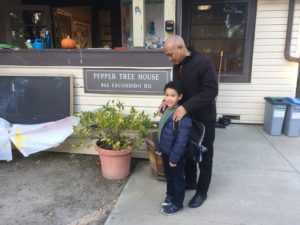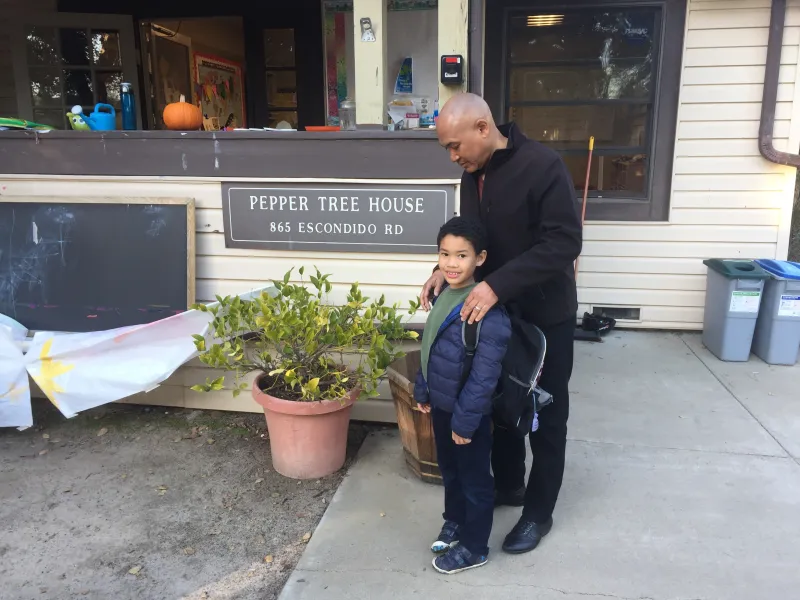The impending closure of two facilities that offer affordable childcare to the Stanford community has left parent graduate students scrambling for alternatives for next year. Meanwhile, Stanford’s WorkLife program is seeking local partnerships to fill the gap.
Rainbow School and Pepper Tree After School Program, two facilities near Escondido Village serving 38 children combined, will be closed this June and replaced by the Children’s Center of the Stanford Community (CCSC). CCSC will move from its current location on Pampas Lane in order to expand its capacity from 144 children to 225 children.
Rainbow and CCSC both offer pre-K programs, so parents with children at Rainbow can switch to CCSC next year. However, Pepper Tree is the only after-school program on campus serving children from kindergarten to second grade. Once it closes, parents will need to look elsewhere for childcare.

Robin Anderson, a Ph.D. student in education, is one such parent. Her younger child is currently enrolled at Pepper Tree.
“I don’t really know what we’re going to do when Pepper Tree closes,” Anderson said.
Anderson and her husband, a high school teacher, do not make enough money to pay for CCSC’s services, which cost from $1,850 to $2,445 per month. Anderson’s child is too young to spend afternoons unattended. She plans to start searching for an undergraduate to watch her child after school.
“[Closing Pepper Tree] totally is marginalizing us parents who have kids that are grade school age,” Anderson added.
Rainbow and Pepper Tree are more affordable for Anderson than CCSC because they provide additional childcare subsidies for residents of Escondido Village, an area where many graduate students live; graduate students’ children make up 65 percent and 37 percent of Rainbow and Pepper Tree’s enrollees, respectively. Without these discounts, the cost of CCSC and other childcare facilities in the area would be prohibitively expensive to some graduate students, despite other subsidies Stanford offers.
Affordable childcare is one of several points of contention between the University and graduate student parents. According to Tina Cheuk M.A. ’07, an education Ph.D. student and leader of the Stanford University Student Parent Alliance, graduate student parents have also had difficulty getting lactation spaces on campus, longer-paid maternity leaves and cheaper health care. Cheuk said she believes these issues constitute a “parenthood penalty” for graduate students at Stanford.
Stanford’s WorkLife office, which runs Rainbow and Pepper Tree, acknowledged the problem. Phyllis Pires, the senior director of WorkLife Strategy, said WorkLife created a program several years ago that offers reduced childcare tuition for graduate students based on their income. Half of graduate students with children in Stanford childcare facilities use the program, which can be applied toward tuition at any of the centers on campus. WorkLife has further pledged to help families at Rainbow and Pepper Tree with their transition to other Stanford childcare providers by covering the difference in cost between the facilities during the families’ first year.
Regardless of subsidies, many Pepper Tree families will need new options that accommodate children in the kindergarten to second grade age range. Pires said WorkLife is “currently exploring alternatives” to Pepper Tree by seeking partnerships with local after-school providers. According to Pires, Stanford plans to partner with the Palo Alto School District to increase after-school childcare at Escondido Elementary School, providing more spots for families whose children are currently at Pepper Tree. Stanford proposes donating $412,500 to install a new building at Escondido.
Though Pires expressed regret over the closure of Rainbow and Pepper Tree, she said she believes the benefits of CCSC’s expansion outweigh the drawbacks. According to Caren Drezner, executive director of CCSC, the center has over 400 families on its wait-list, and expansion will allow it to serve almost 60 percent more families.
Drezner expects more graduate student families to join the program once CCSC moves to Escondido Village. Unlike Rainbow and Pepper Tree, which prioritize graduate student applicants, CCSC gives priority to faculty, according to Lisa Hummel, a Ph.D. student in sociology and the former childcare research specialist at WorkLife.
However, Pires said that Pepper Tree students will receive priority at the Escondido expansion and that Stanford believes campus facilities have enough pre-school spaces to accommodate both faculty and Rainbow families next fall.
Parents say the closure of Rainbow and Pepper Tree will also mean the loss of the intimate, particularly multicultural learning environments that differentiate the programs from other childcare facilities on campus. It is this kind of environment that convinced Jenny Haase, a visiting scholar, to enroll her kids in Rainbow.
According to Haase, Rainbow’s “play-based, European-style” care helped her child form close friendships. Removing her child from Rainbow and enrolling her in another program would disrupt those friendships and “break my heart,” Haase said.
Pires emphasized that CCSC shares Rainbow’s “focus on play-based, child-centered learning, community and diversity.”
Additional traffic caused by more families dropping their children off at CCSC may present another problem. Traffic is already a “huge issue” in the area where Rainbow and Pepper Tree are located, Hummel said. Bing Nursery School, which serves 400 families, is right across the street. Hummel predicts massive traffic jams when 200 additional families commute to the area to attend CCSC. Pires said over email that designs for CCSC’s move are “taking issues of traffic and parking into consideration.”
Though four months remain until Rainbow and Pepper Tree close, they are already missed.
“Rainbow and Pepper Tree are very special programs that have served the University well for many years and will hold a special place in the legacy of our programs serving families,” Pires said.
Gwynn Lyons initially wrote this article for COMM 104W. Contact her at glyons ‘at’ stanford.edu.
An earlier version of this article incorrectly stated that WorkLife runs CCSC; CCSC is an independent nonprofit organization. The original story also implied that CCSC provides subsidies specifically for faculty and staff; CCSC does not provide these subsidies, which are managed by Stanford’s WorkLife Office and apply to all campus childcare facilities. The updated story additionally clarifies that students receive second priority for campus childcare spots, immediately after faculty. Finally, the original article compared CCSC’s tuition to Pepper Tree’s without acknowledging that CCSC provides full-day care, while Pepper Tree provides half-day care. The Daily regrets these errors.
The article has also been updated to include additional comments from Pires and to clarify parents’ views on what differentiates the closing facilities from others on campus.
